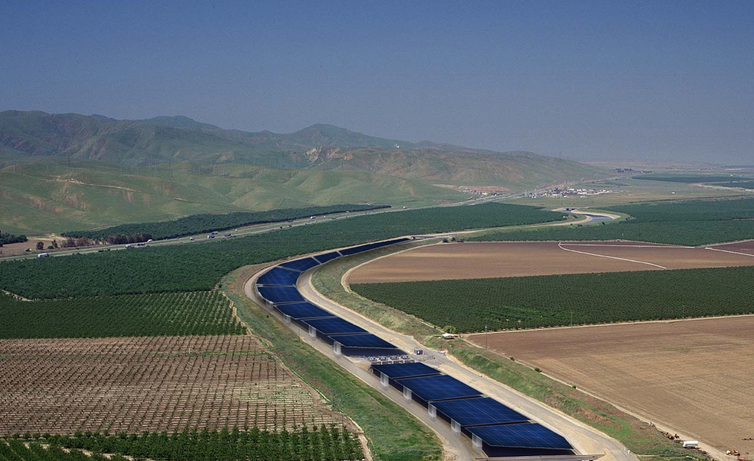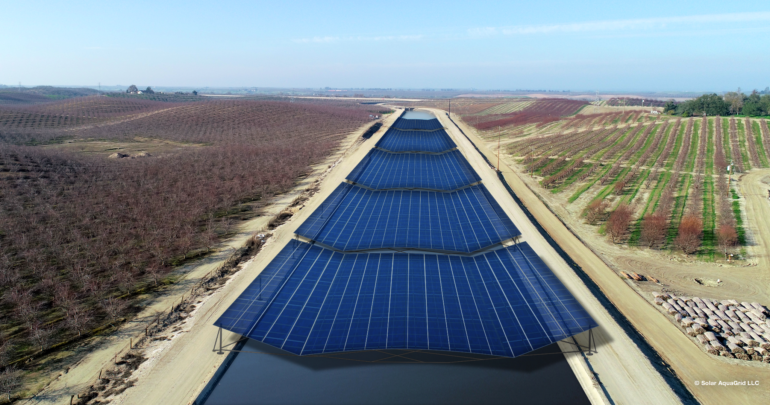To most people, a solar farm or a geothermal plant is simply a power producer. Scientists and engineers see far more potential.
They envision offshore wind turbines capturing and storing carbon beneath the sea, and geothermal plants producing essential metals for powering electric vehicles. Electric vehicle batteries, too, can be transformed to power homes, saving their owners money.
With scientists worldwide sounding the alarm about the increasing dangers and costs of climate change, let’s explore some cutting-edge ideas that could transform how today’s technologies reduce the effects of global warming, from five recent articles in The Conversation.
1. Solar canals: Power + water protection
What if solar panels did double duty, protecting water supplies while producing more power?
California is developing the United States’ first solar canals, with solar panels built atop some of the state’s water distribution canals. These canals run for thousands of miles through arid environments, where the dry air boosts evaporation in a state frequently troubled by water shortages.
“In a 2021 study, we showed that covering all 4,000 miles of California’s canals with solar panels would save more than 65 billion gallons of water annually by reducing evaporation. That’s enough to irrigate 50,000 acres of farmland or meet the residential water needs of more than 2 million people,” writes engineering professor Roger Bales of the University of California, Merced. They would also expand renewable energy without taking up farmable land.

Other countries including China and India are also testing the solar farms over water.
Solar Aquagrid LLC, CC BY-ND
Research shows that human activities, particularly using fossil fuels for energy and transportation, are unequivocally warming the planet and increasing extreme weather. Increasing renewable energy, currently about 20% of U.S. utility-scale electricity generation, can reduce fossil fuel demand.
Putting solar panels over shaded water can also improve their power output. The cooler water lowers the temperature of the panels by about 10 degrees Fahrenheit (5.5 Celsius), boosting their efficiency, Bales writes.
À lire aussi :
First solar canal project is a win for water, energy, air and climate in California
2. Geothermal power could boost battery supplies
For renewable energy to slash global greenhouse gas emissions, buildings and vehicles have to be able to use it. Batteries are essential, but the industry has a supply chain problem.
Most batteries used in electric vehicles and utility-scale energy storage are lithium-ion batteries, and most lithium used in the U.S. comes from Argentina, Chile, China and Russia. China is the leader in lithium processing.
Geologist and engineers are working on an innovative method that could boost the U.S. lithium supply at home by extracting lithium from geothermal brines in…
